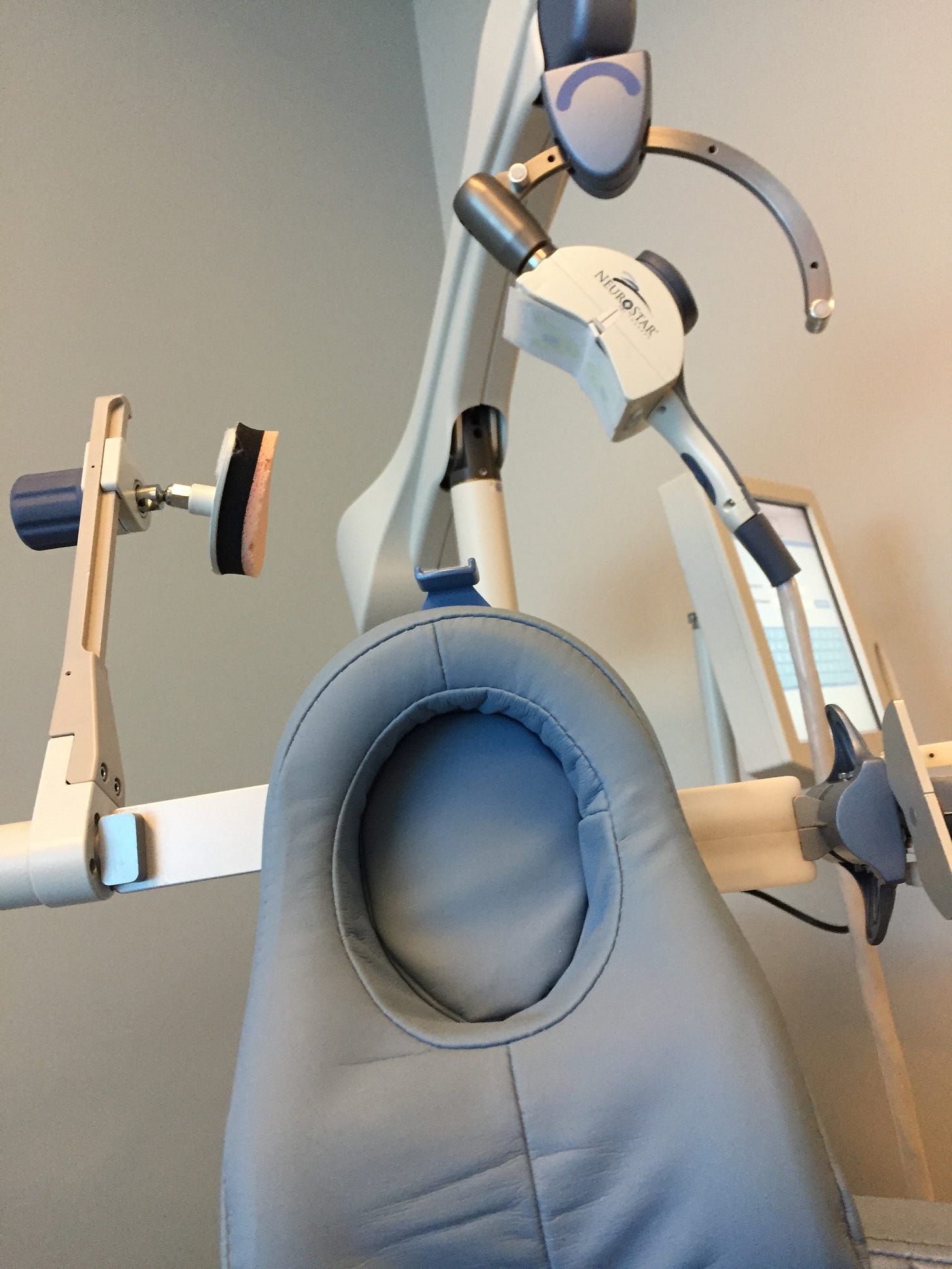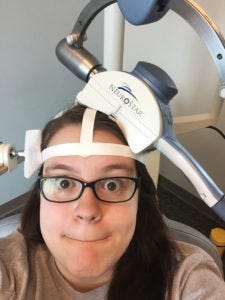How to cure your depression with magnets
Depression seems like it should be so easy to cure.
Go to therapy.
Maybe take anti-depressants.
Exercise, eat well and hydrate.
Think happy thoughts and avoid things that make you miserable.
Boom! Depression cured. It’s so simple.
Except it’s not that simple. It’s never that simple. Because depression is a monster.
I followed this routine for 12 years with occasional periods of success. Those periods were marked by success in school, new friendships, personal projects and laughter.
But overall, I had a lot of falls in my mental health. Over and over again.
Each time I would stumble and fall, my therapist, psychiatrist and I would consult and we’d create a new plan of attack. How can we approach this depression differently? What makes this situation different? What have we learned in the past that we can use now?
But by the time I entered my 20s, I was exhausted with picking myself up after these falls. Not only was I picking myself up, I was picking up over a decade of emotional baggage that I couldn’t shed no matter what I tried.
We considered different intensive treatment options over the years that ended up not working out for a myriad of different reasons. But in the fall of 2015, my psychiatrist proposed something new.
Transcranial Magnetic Stimulation. TMS.
He pitched it as a funky magnetic device they’d put on my head, my scalp would feel tingly, and afterwards my depression would be gone. It’d take a bunch of sessions but my depression would just go away after a while. Minimal to no side effects. The only catch was that my insurance might not cover it and it cost $15,000 out of pocket.
To which my psychiatrist added with a dejected look on his face, “I really wish you had $15,000 laying around somewhere.” (Don’t we all?)
We nervously sent in a request to our insurance and went around to my doctors to see what they thought.
As we learned more about TMS it seemed like the perfect procedure for me. It got my cardiologist’s approval—he wasn’t worried about any interference with my dysautonomia. My psychiatrist was excited about it, he couldn’t wait to see how effective it was. And my therapist loved how hopeful I was. She liked the science of it, she liked the promise of it, she liked my enthusiasm about it.
It took a few weeks to get insurance approval. I met all of their requirements:
I had tried Cognitive Behavioral Therapy.
I had tried four or more different psychiatric medications (there were specific rules about what types of medications they were, but I think I was on four anti-depressants at the time I submitted my request. I was more in the 25+ range of medications.)
My psychiatrist believed I would benefit from TMS.
The psychiatrist at the TMS practice believed I was a great candidate after reviewing my records and meeting with me.
The day I was approved by insurance, I cried so many tears of joy: this was happening. This was promising. This could be life changing. We’d start right after the new year.
*
TMS is the most bizarre medical procedure I’ve ever had.
You go into a room and get into a very interesting looking chair.
They put a weird paper crown around your temple that velcros into the machine to hold your head in place. (I always thought it would be a really good base for a flower crown and considered taking some extras home and using it as such.) You put ear plugs in.
They raise the chair up and lean you back.
They put your head in place and align you with weird protractor looking tools that are attached to the chair.
They bring down the coil/magnet and place it against your head.
They bring down the counter pressure place it against the opposite side of your head to hold you in place and to make sure your neck doesn’t hurt from the weight of the magnet.
They turn on the machine.
It feels like a woodpecker is trying to get through your skull into your brain at first, then you get used to it. But nothing is touching your skull. It’s just magnetic pulses. It’s uncomfortable but not painful.
For my depression treatments, it’s five seconds of tapping followed by 25 seconds of peace (repeat for about 40 minutes) on my left side of the head. For my anxiety treatments, it’s a constant tapping on my right side of the head. (Of course, everything will vary by patient, by doctor, by machine, by facility.)
Half way into my treatments, I met with my TMS psychiatrist and we decided to add in a second treatment (called bilateral treatments) every day for anxiety, because my symptoms of depression were getting better but my symptoms of anxiety were not. So every day, I had 40 minutes of !dundundundundundundundundun! followed by a break and repeat on the left side of my head and 40 minutes of a slow, !tap, tap, tap, tap! on the right side of my head.
(Above is a recording of a TMS treatment on the left side. It sounds like a machine gun, but it’s all magnetic pulses. No pain, just strange tapping feelings.)
(Above is my hand during one of my bilateral treatments on my right side for anxiety. My hands twitched a highly abnormal amount.)
Due to the severity of my depression and how long I’d been living with it, I had a 70% chance of relapsing.
But because of how successful TMS had been, I had a 90% chance of it working again if I got a second round of treatment.
I took those numbers to heart, repeating that 90% statistic every time I got nervous about relapse. I was high risk, but it was almost definite that I could get back to that amazing state of recovery again. We now knew what my brain required to get out of depression: it was TMS.



